SVBONY SC715C OSC Planetary Camera Astronomical Imaging Test
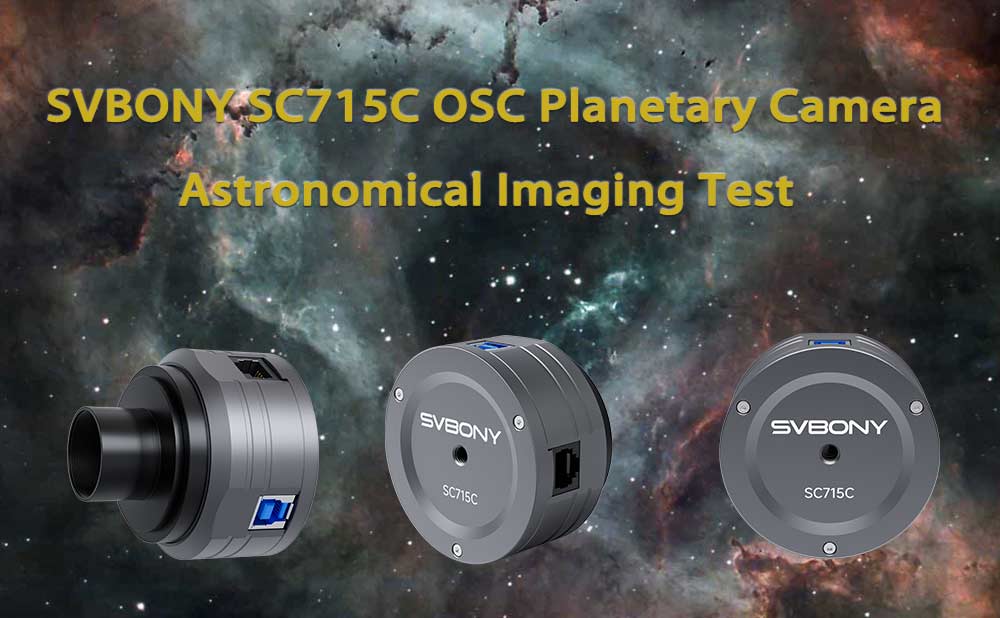
SVBONY SC715C OSC Planetary Camera Astronomical Imaging Test
Note: Thanks to Dr.Steve Wainwright for his professional and detailed review of the SVBONY SC715C Planetary Camera.
Original link: https://x-bit-astro-imaging.blogspot.com/2025/02/further-testing-of-svbony-sc715c.html
https://x-bit-astro-imaging.blogspot.com/2025/01/implementing-and-testing-svbony-sc715c.html
https://x-bit-astro-imaging.blogspot.com/2025/04/locating-moon-with-imperfectly-polar.html
In his tests, Dr. Steve Wainwright FRAS evaluated the SVBONY SC715C OSC (Color Single Sensor) camera in a number of astronomical imaging scenarios, including solar imaging, deep sky imaging and lunar imaging. Combined with AstroDMx Capture software, this OSC camera demonstrated its ability to capture amazing detail in a variety of conditions.
Solar Imaging
H-alpha light
Two overlapping areas of the Sun were imaged with AstroDMx Capture by capturing 1500-frame RAW SER files
AstroDMx Capture streaming H-alpha data

The best 75% of the frames in each SER file were debayered and stacked in Autostakkert!4 The two resulting images were stitched in Microsoft ICE, wavelet processed in waveSharp and further processed in Gimp 2.10 and G’MIC-QT.
The Sun in H-alpha light
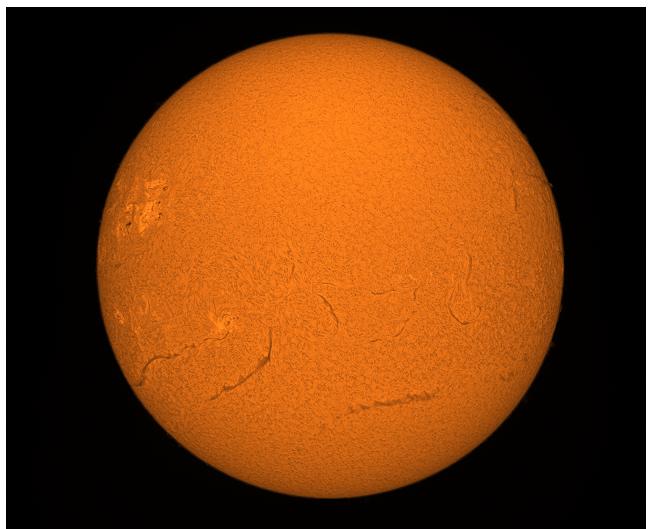
The SC715C camera captured the H-alpha data very well in high detail.
White light
Two overlapping areas of the Sun were imaged with AstroDMx Capture by capturing 1500-frame RAW SER files.
AstroDMx Capture streaming White light data
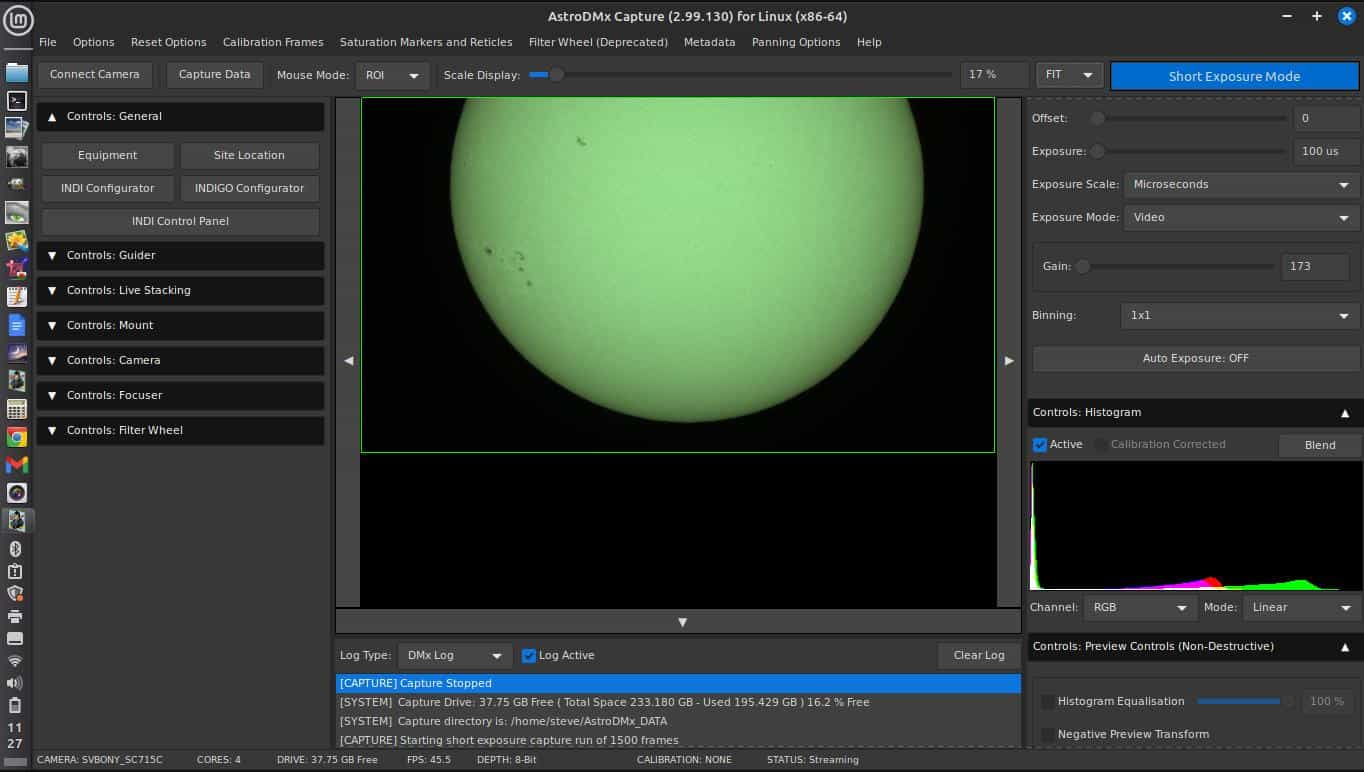
The best 75% of the frames in each SER file were debayered and stacked in Autostakkert!4. The two resulting images were stitched in Microsoft ICE, wavelet processed in waveSharp and further processed in Gimp 2.10.
Note that the preview of the Sun in white light has a green hue. This is normal for true RAW data because the Bayer pattern has twice as many green pixels as either red or blue. The Bayer pattern of the SC517C cmos camera is GBRG. All colour corrections are made in post processing.
The Sun in White light
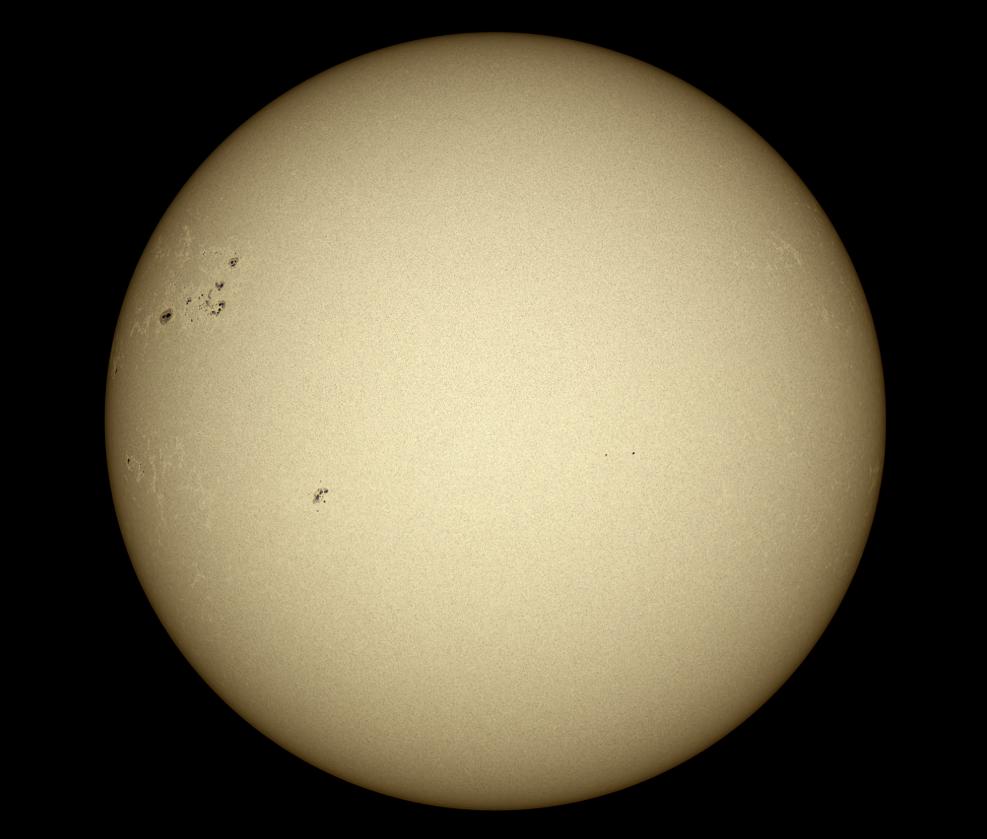
Deep Sky imaging
The Rosette Nebula
Two hours worth of 2 minute exposures were captured of the Satellite cluster at the heart of the Rosette nebula as RAW Fits files, along with calibration frames.
The live-stacking experimental feature in AstroDMx Capture was used during image capture to improve the preview, of the image capture. 60 image light frames were captured in total.
AstroDMx Capture having captured 60 frames, showing just the 60th frame captured
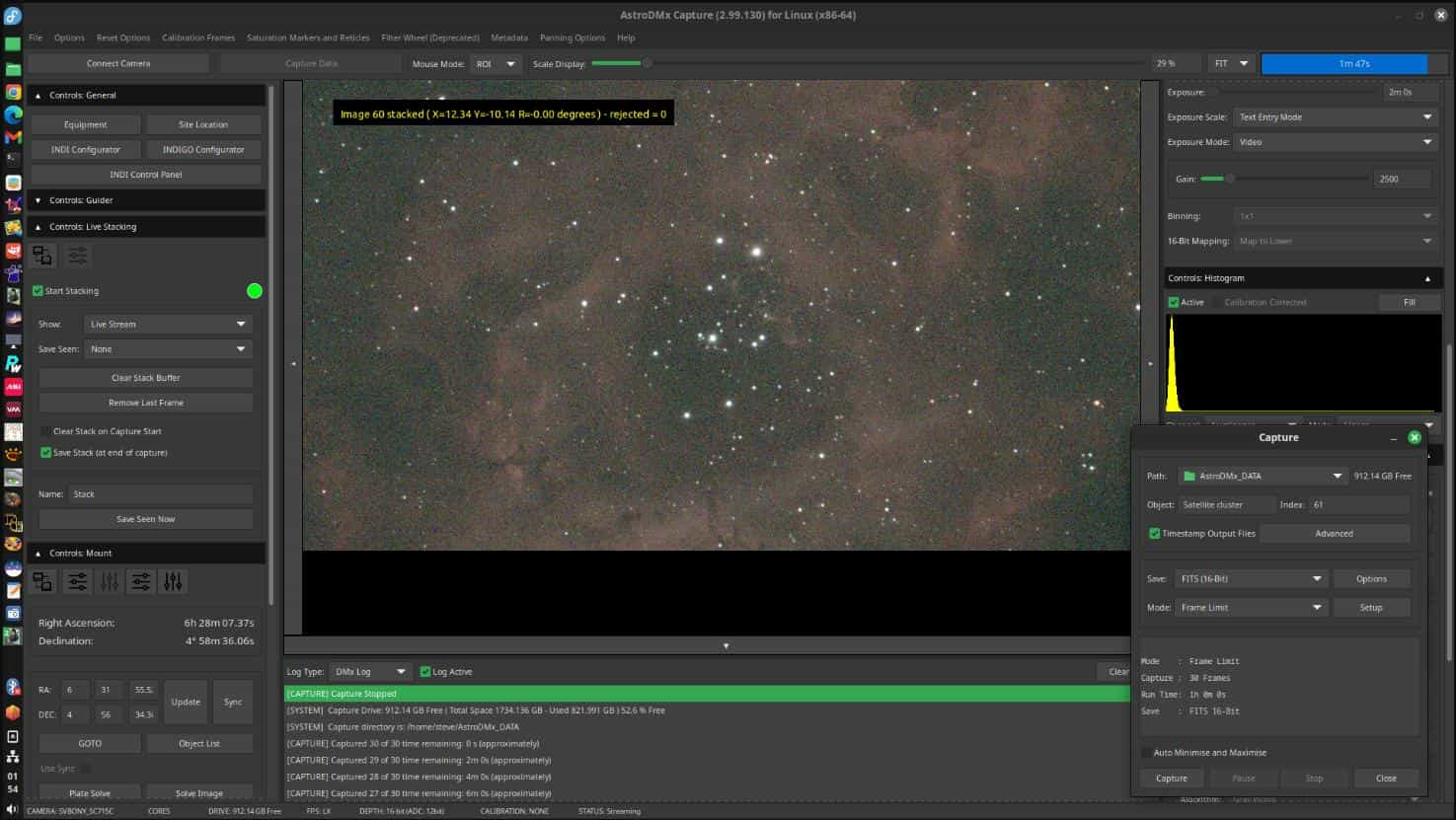
AstroDMx Capture having captured 60 frames, showing the live-stack of 60 images
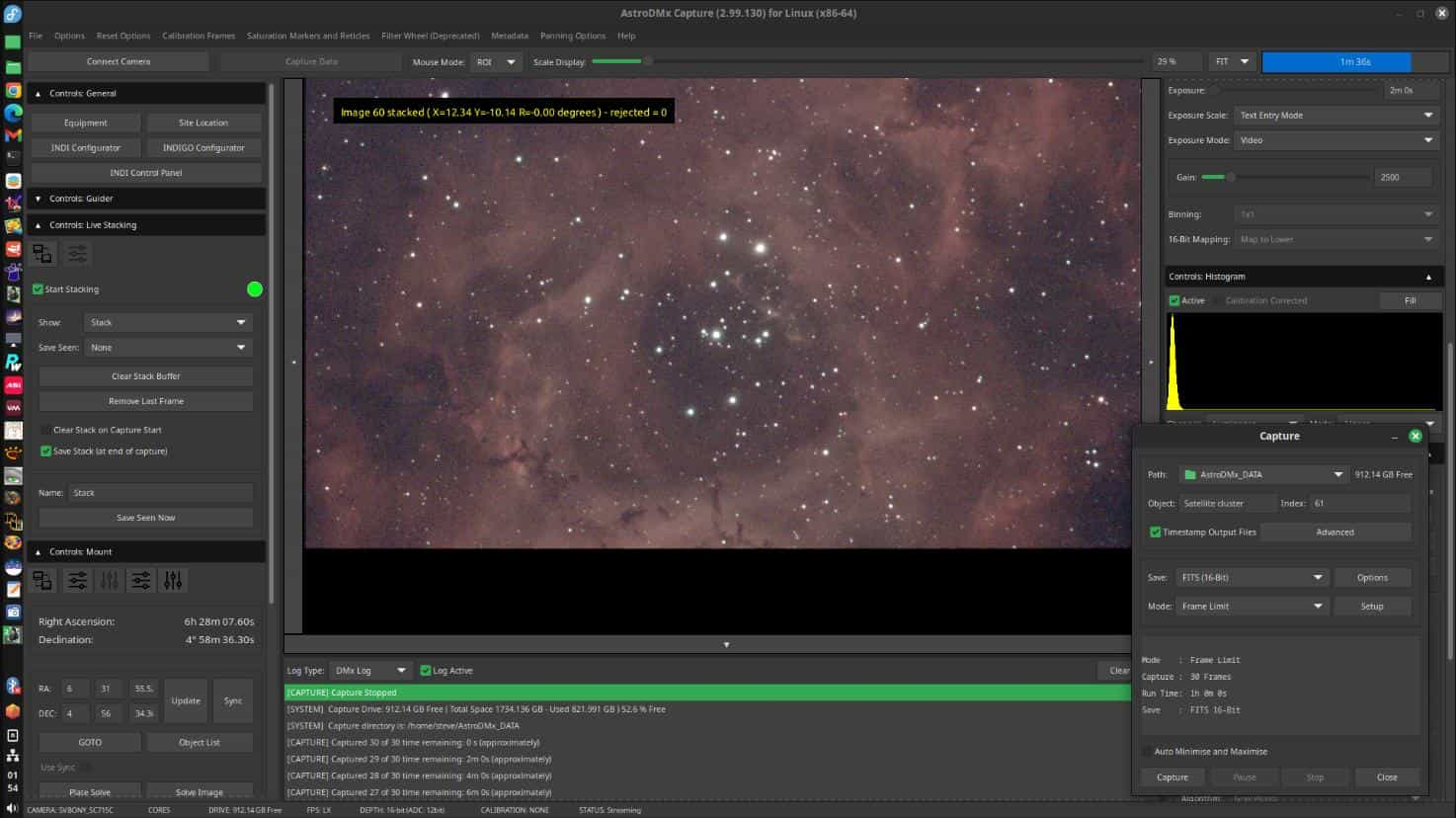
Clearly the preview was vastly improved by the live-stacking.
The data were debayered, calibrated, stacked and partly processed in PixInsight and further processed in GraXpert, Cosmic Clarity, Gimp, ACDsee and G'MIC. Four renderings are presented here:
The Satellite cluster and associated nebulosity
Linked channels

Unlinked channels
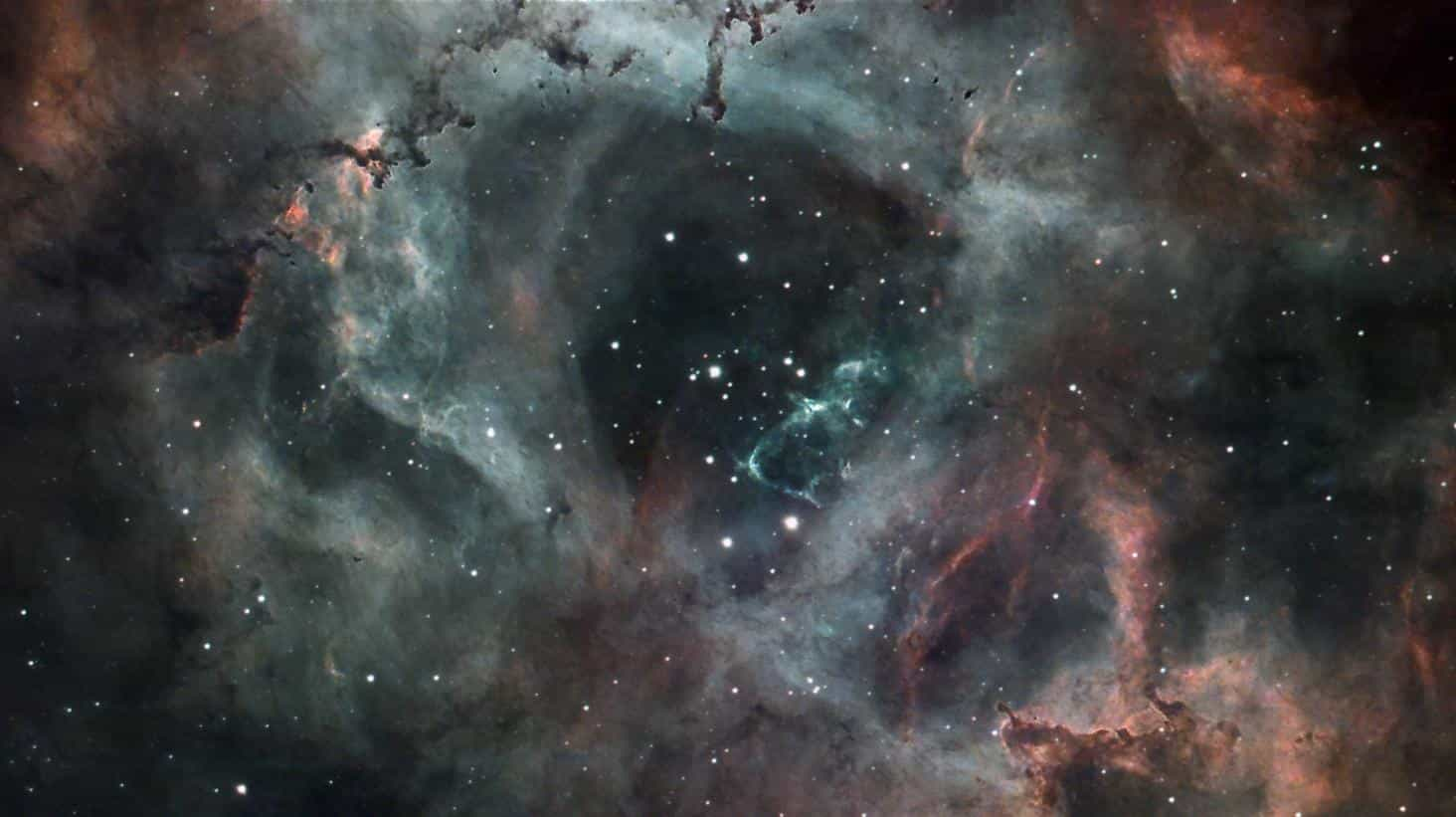
Blend of Linked and Unlinked channels
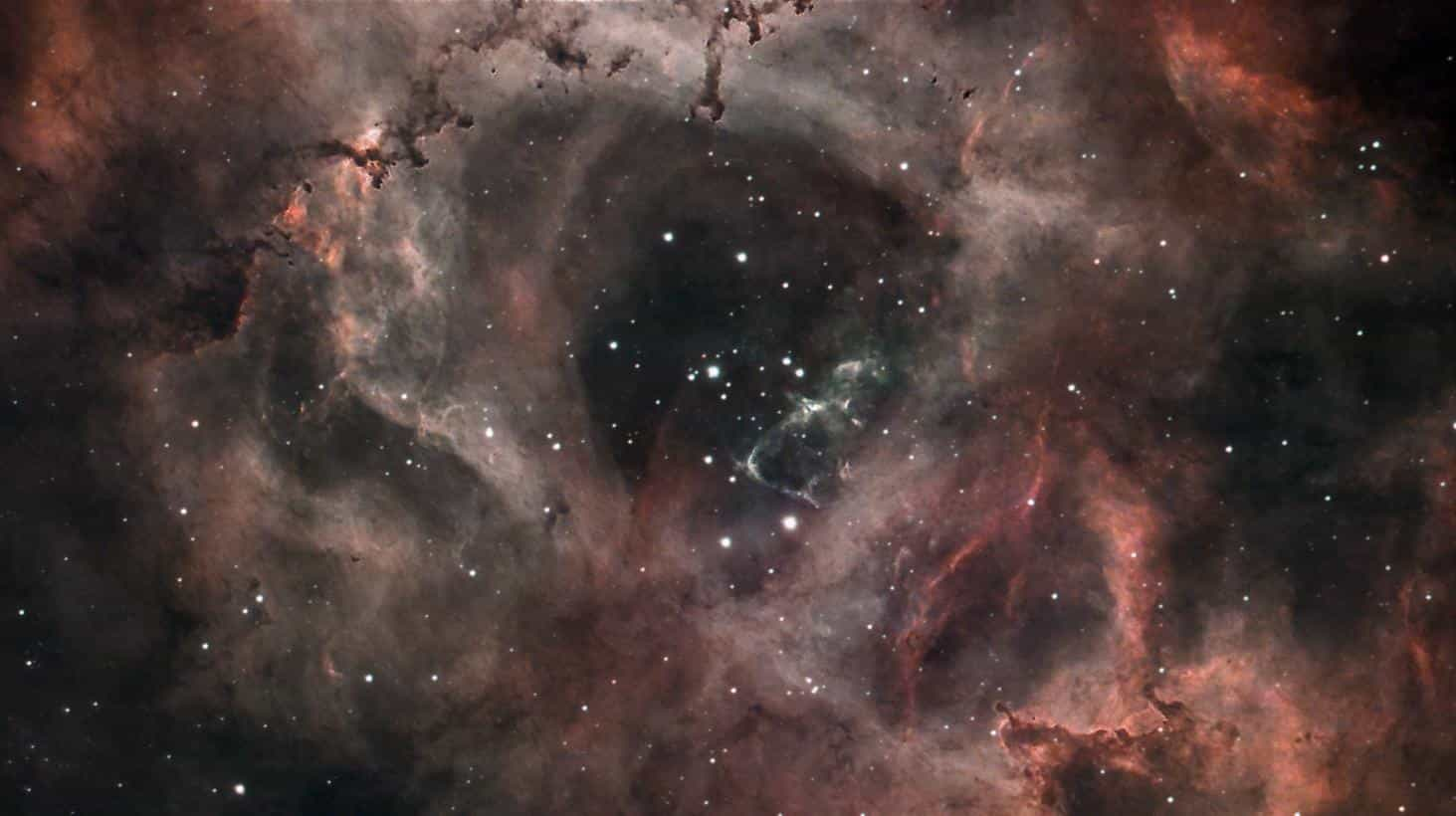
HOO rendering
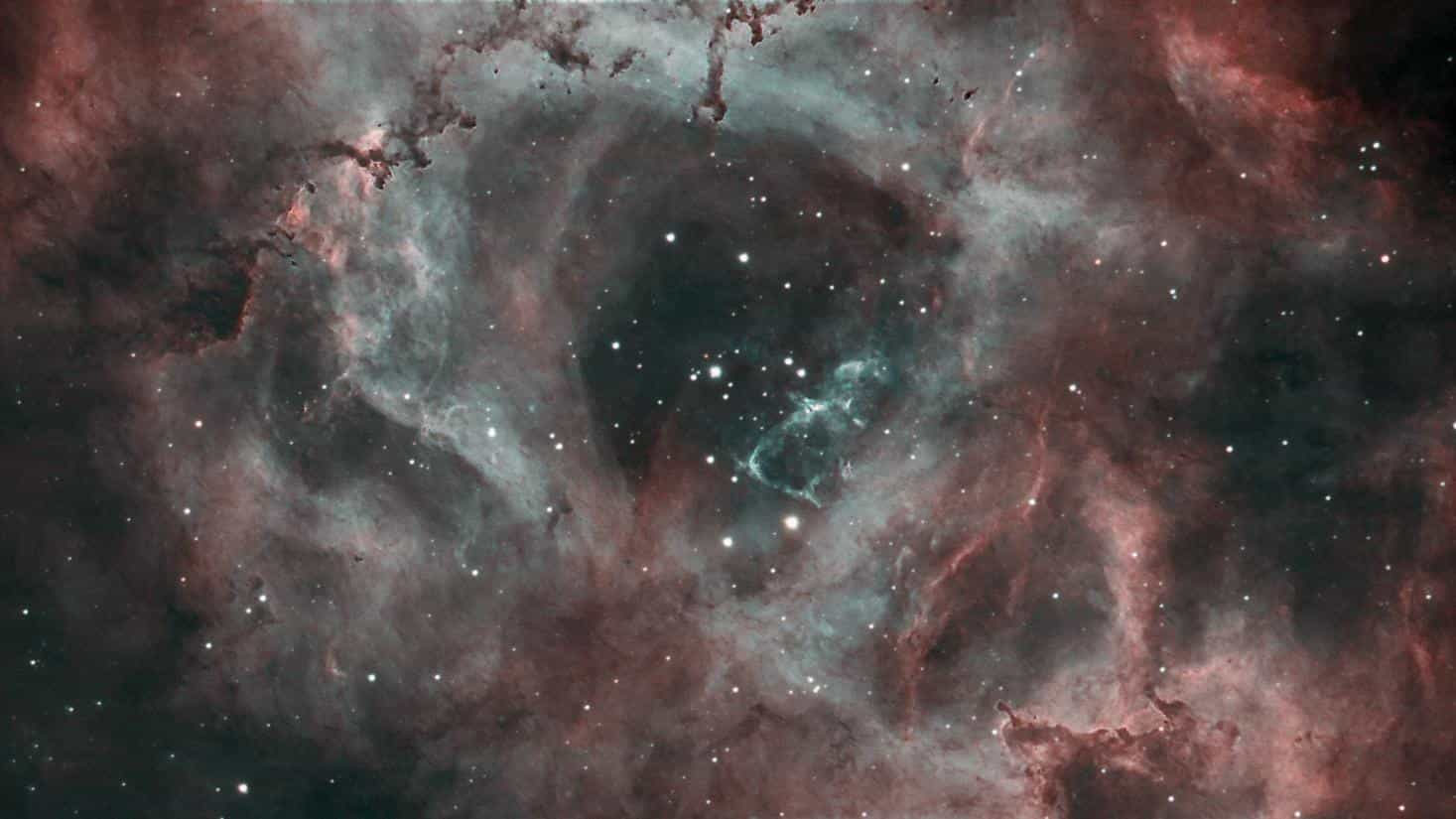
The SC715C planetary imaging camera was able to capture high resolution data on this bright nebulosity and produced good results.
The Seagull Nebula
104 minutes worth of 2 minute exposures were captured of the Seagull nebula as RAW Fits files, along with calibration frames.
The live-stacking experimental feature in AstroDMx Capture was used during image capture to improve the preview, of the image capture. 52 image light frames were captured in total.
AstroDMx Capture having captured 30 frames, showing just the 30th frame captured
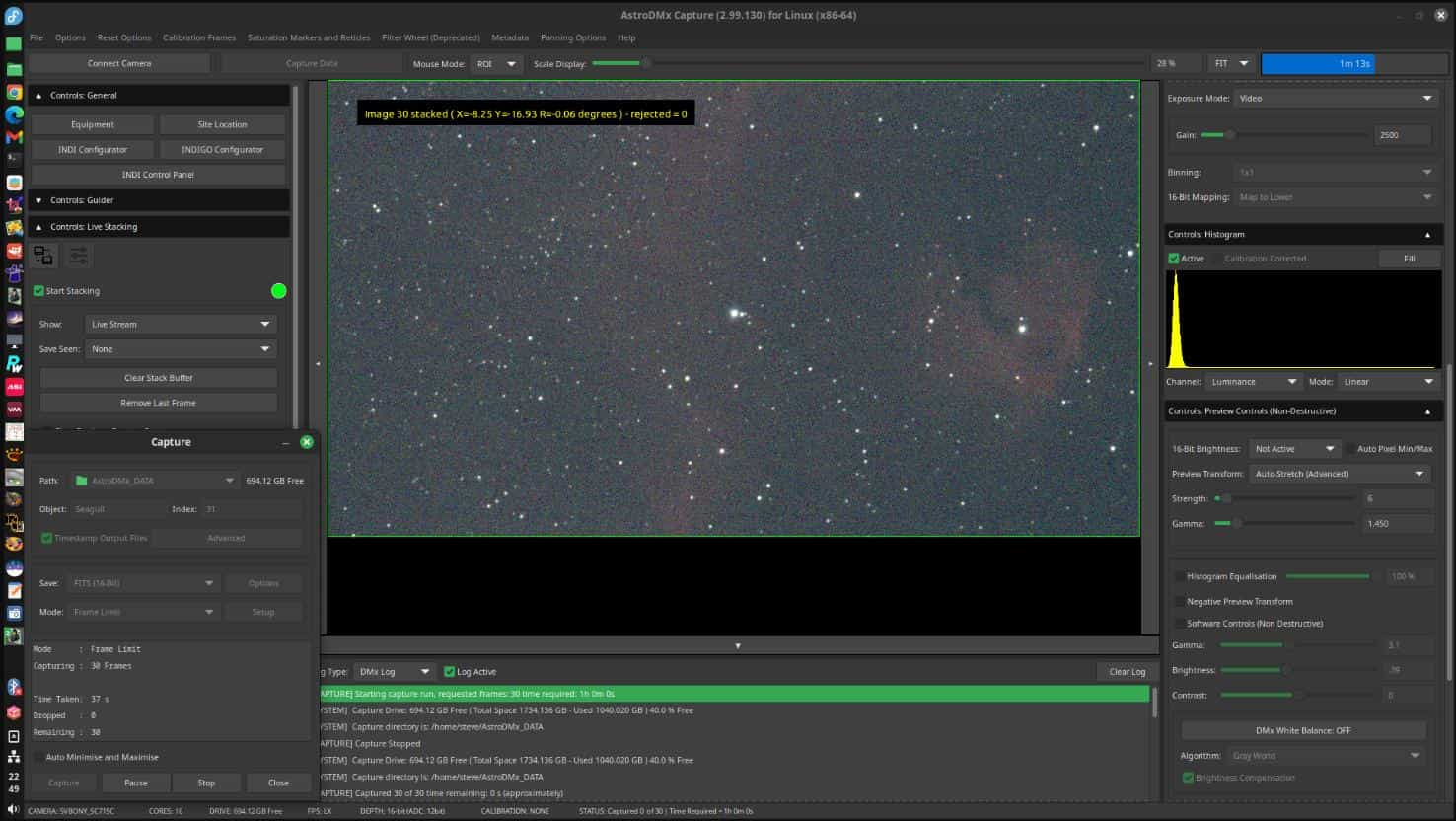
AstroDMx Capture having captured 30 frames, showing the live-stack of 30 images

The data were debayered, calibrated, stacked in ASIDeepStack and further processed in GraXpert, Cosmic Clarity, Gimp, ACDsee and G'MIC. Three renderings are presented here:
RGB

HOO
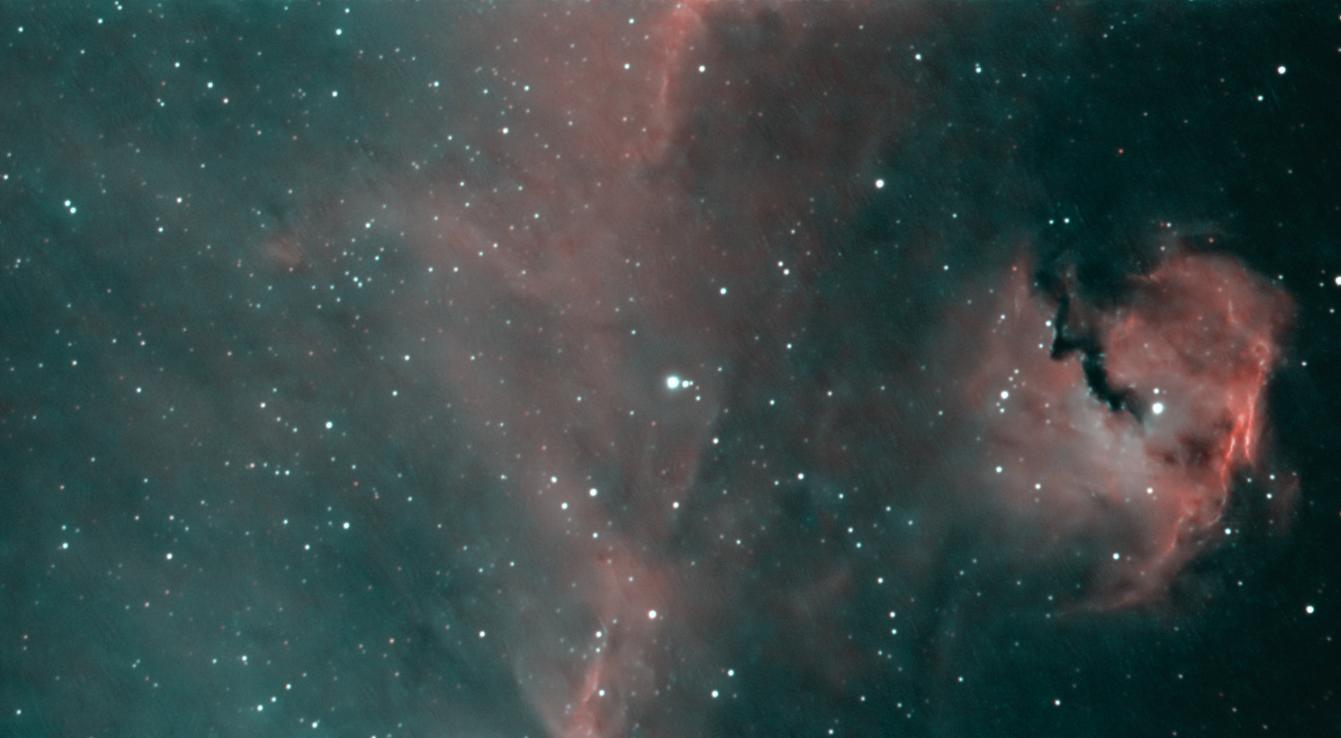
Blend of RGB and HOO

Once again the SC715C planetary camera was able to capture high resolution data on this nebulosity and produced good results.
Lunar Imaging
AstroDMx Capture was used to capture RAW 1500-frame SER files of different regions of the Moon.
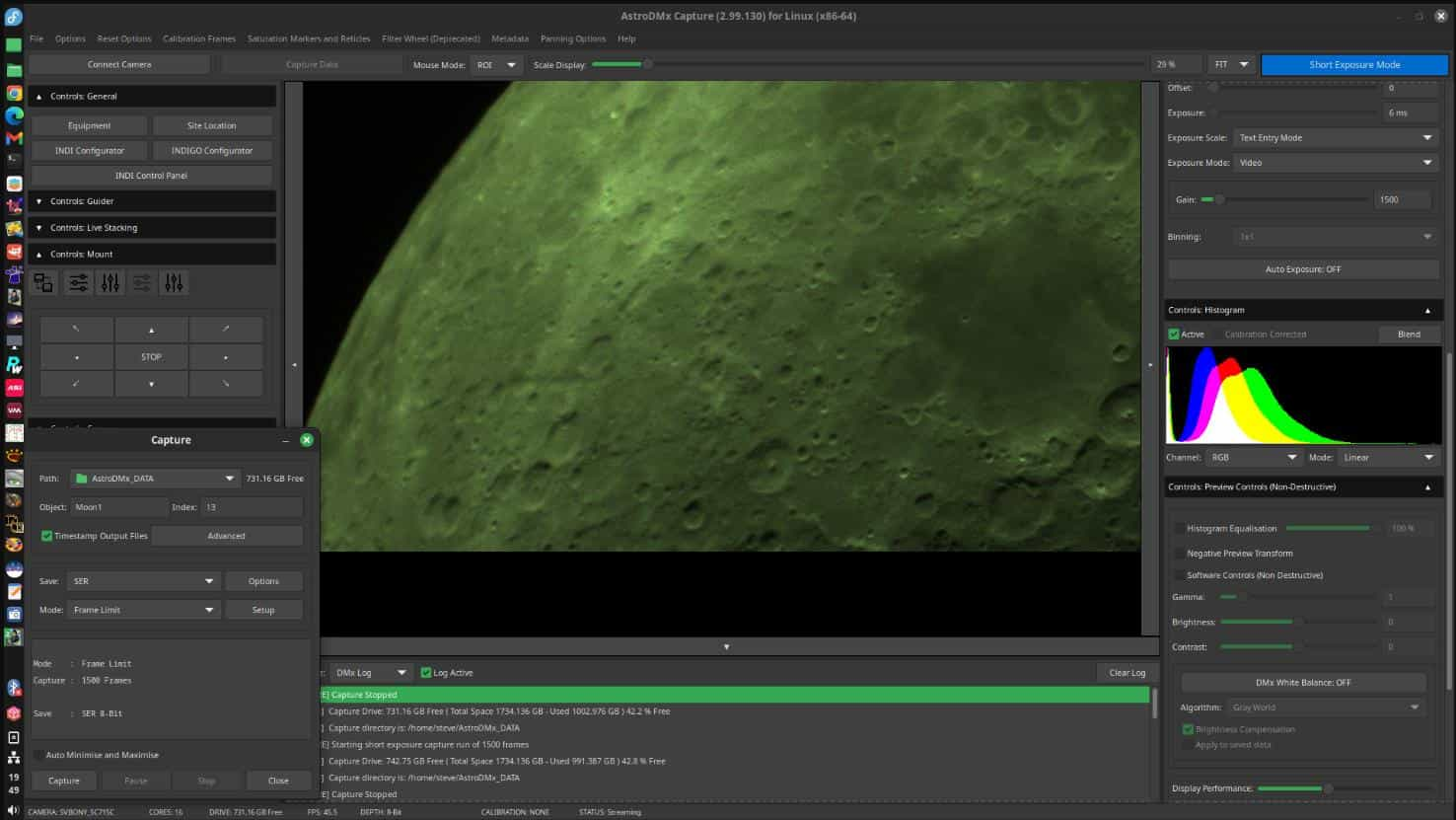
The best 75% of the frames in the SER files were debayered and stacked in Autostakkert!4.
The combination of small pixel size and long focal length of this system leads to oversampling. However, before the images were processed, they were re-scaled down by 66%. Microsoft ICE was used to stitch various files together to produce a larger image from which interesting areas could be cropped. The images were wavelet processed in waveSharp and further processed in Gimp 2.10 and ACDSee.
Two regions of interest:
Palus Somni, Mare Crisium, Mare Fecunditatis region

Theophilus, Cirillus, Catharina, Rupes Altai, Piccolomini region
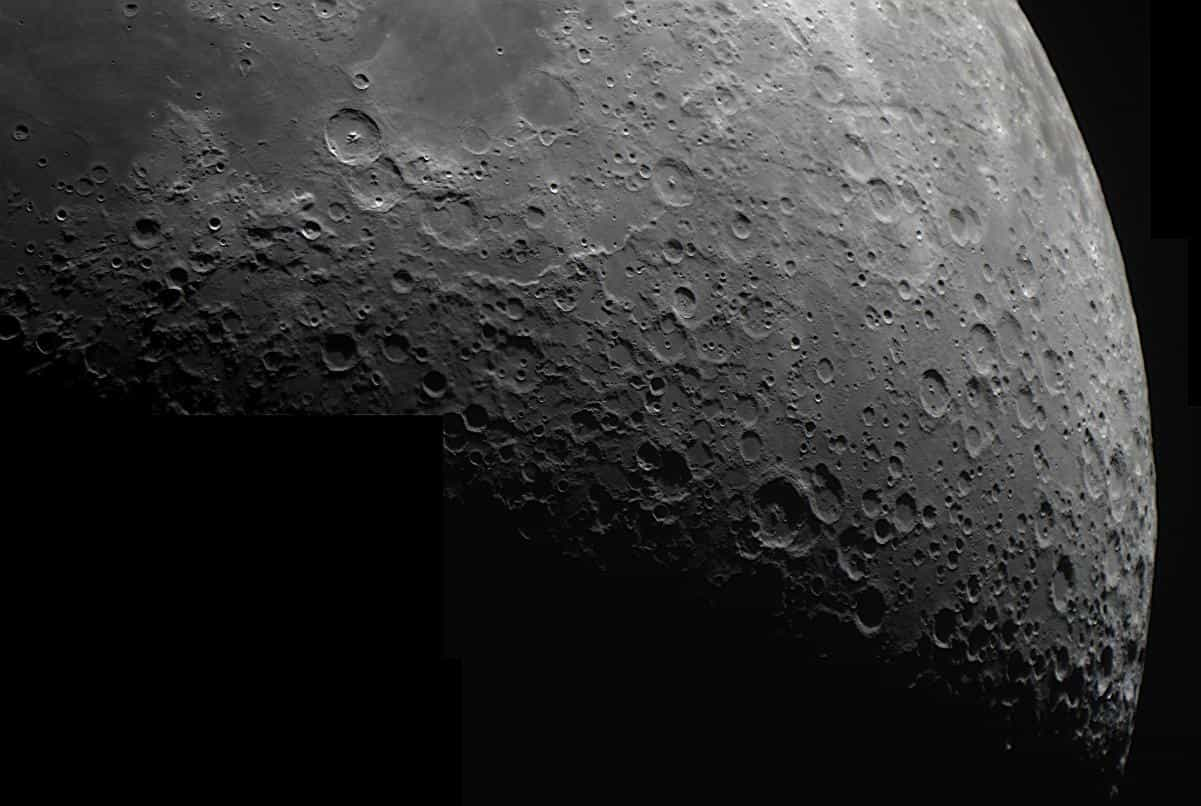
summary
Thanks again to Dr. Steve Wainwright FRAS for his professional evaluation.
SVBONY SC715C astronomical camera is an excellent camera that combines high resolution, low noise and detail capture capabilities, especially for deep sky imaging and planetary imaging. If you are looking for an astronomical camera with high-quality imaging capabilities, SC715C astro osc camera is undoubtedly your ideal choice!








